Convoy T3 Titanium Flashlight Review
Convoy entered the titanium flashlight market, and has a T3 available! It runs AA and lithium-ion batteries and has Nichia 519a. Read on!
Official Specs and Features
Here’s a link to the Convoy T3 Titanium flashlight product page.
Versions
There are many versions of the T3, including aluminum versions in many colors. There are also many emitter options. In the case of titanium specifically, there are two versions: stonewashed and polished (seen here). Among all the emitters, there are different CCTs available, too. There are tons of choices!
Price
I’m not sure what this light listed for on the official Convoy store, but it’s listed at $61.95 at NealsGadgets. The Convoy T3 Titanium flashlight appears to be sold out in both places, though! Here’s an affiliate link to NealsGadgets for the Convoy T3 Titanium flashlight.
Short Review of the Convoy T3 Titanium flashlight
There is plenty to love about the T3 in Titanium. First, it’s titanium! It’s great to see Simon of Convoy working with titanium, and I look forward to many other of his lights being available in this metal. Secondly, and very importantly, the T3 titanium runs on both AA (that is, 1.5V) cells as well as the higher-output-capable lithium-ion 14500 cell.
Long Review
The Big Table
| Convoy T3 Titanium Flashlight | |
|---|---|
| Emitter: | Nichia 519A (4000K) |
| Price in USD at publication time: | $61.95 at NealsGadgets |
| Cell: | 1×14500 |
| High Runtime Graph | Medium Runtime Graph |
| LVP? | Yes |
| Switch Type: | Mechanical |
| On-Board Charging? | No |
| Claimed Lumens (lm) | – |
| Measured Lumens (at 30s) | 362 |
| Candela per Lumen | 8.2 |
| Claimed Throw (m) | – |
| Candela (Calculated) in cd (at 30s) | 112lux @ 4.937m = 2730cd |
| Throw (Calculated) (m) | 104.5 |
| Claimed CCT | 4000 |
| Measured CCT Range (K) | 3650-3750 Kelvin |
| Item provided for review by: | Nealsgadgets |
| All my Convoy reviews! | |
| Convoy T3 Titanium Flashlight | |
|---|---|
| Emitter: | Nichia 519A (4000K) |
| Price in USD at publication time: | $61.95 at NealsGadgets |
| Cell: | 1xAA |
| High Runtime Graph | Medium Runtime Graph |
| LVP? | Yes |
| Switch Type: | Mechanical |
| On-Board Charging? | No |
| Claimed Lumens (lm) | – |
| Measured Lumens (at 30s) | 139 |
| Candela per Lumen | 8.2 |
| Claimed Throw (m) | – |
| Candela (Calculated) in cd (at 30s) | 87lux @ 3.393m = 1002cd |
| Throw (Calculated) (m) | 63.3 |
| Claimed CCT | 4000 |
| Measured CCT Range (K) | 3750-3800 Kelvin |
| Item provided for review by: | Nealsgadgets |
| All my Convoy reviews! | |
^ Measurement disclaimer: Testing flashlights is my hobby. I use hobbyist-level equipment for testing, including some I made myself. Try not to get buried in the details of manufacturer specifications versus measurements recorded here; A certain amount of difference (say, 10 or 15%) is perfectly reasonable.
What’s Included
- Convoy T3 Titanium flashlight
Package and Manual
There is no manual.
Build Quality and Disassembly
The build quality on this Convoy T3 Titanium flashlight is “good.” And I use that term sort of loosely. I’d say the T3 is larger in diameter than I really want.
The side area – the cell tube – also has a grippy nature that’s aggressive in some directions.
The tail has a nice beefy spring.
One other problem I have is that the threads are also “very titanium” – they have the normal amount of grit you should expect on titanium threads, and maybe a little extra. They’re not very smooth. But I get it, they’re titanium. So not a huge deal, but just be aware.
This cell tube is not reversible.
All the parts are very easily accessible, though. If you want to swap the emitter (but why would you!?!), it should be very easy!
Size and Comps
21mm (diameter), 96.8mm (length)
Weight: 78g (only flashlight, not include the clip/lanyard/package)
If the flashlight will headstand, I’ll show it here (usually the third photo). If the flashlight will tailstand, I’ll show that here, too (usually the fourth photo).
Here’s the test light with the venerable Convoy S2+. Mine’s a custom “baked” edition Nichia 219b triple. A very nice 18650 light.
Also seen above is the light beside my custom engraved TorchLAB BOSS 35, an 18350 light. I reviewed the aluminum version of that light in both 35 and 70 formats.
Retention and Carry
The tail end of the Convoy T3 Titanium flashlight has two holes for attaching a lanyard. These holes are in both sides of the tailcap, an unusual feature. A lanyard is not included.
No pocket clip is included but the aluminum T3 does ship with a pocket clip, so we know there is one available.
Power and Runtime
The Convoy T3 Titanium flashlight uses a single cell. It can run any type cell that fits, too, which is a fantastic feature. That means a 1.5V cell will work (primary or NiMH or whatever) but also supported are 4.2V (or 3.7V nominal) lithium-ion cells!
It’s because of this dual chemistry support and also more (and better?) modes that I think the Convoy T3 driver would be great in a light like the FocusWorks F2. In fact, this T3 driver would be a great default driver for the F2! I recommend it.
The cell goes into the T3 in the normal way – positive end toward the head. I recommend removing the tailcap because if you go the head removal route, you might accidentally loosen the bezel.
Below are a host of runtimes! There seems to be low voltage protection for both lithium-ion and NiMH cells, as well as a bit of blinking when the cell voltage gets low.
Modes and Currents
14500:
| Mode | Mode Claimed Output (lm) | Claimed Runtime | Measured Lumens | Tailcap Amps |
|---|---|---|---|---|
| 100% | 100% | – | 372 | 1.17 |
| 30% | 30% | – | 143 | 0.37 |
| 10% | 10% | – | 44 | 0.10 |
| 1% | 1% | – | 4.4 | ~0.00 |
AA (1.5V)
| Mode | Mode Claimed Output (lm) | Claimed Runtime | Measured Lumens | Tailcap Amps |
|---|---|---|---|---|
| 100% | 100% | – | 140 | 1.82 |
| 30% | 30% | – | 51 | 0.46 |
| 10% | 10% | – | 13 | 0.13 |
| 1% | 1% | – | 1.3 | ~0.00 |
Pulse Width Modulation
Surprisingly, and pleasantly, none of the output levels have PWM! As seen in the two tables above, the order is first 14500 (4, low to high), then AA (4, low to high). This order will be repeated below, too.
Here you can see a “baseline” – a chart with almost no light hitting the sensor.
Then there’s the Ultrafire WF-602C flashlight, which has some of the worst PWM I’ve seen. It’s so bad that I used a post about it to explain PWM! Here are multiple timescales (10ms, 5ms, 2ms, 1ms, 0.5ms, 0.2ms) to make comparing this “worst” PWM light to the test light easier. That post also explains why I didn’t test the WF-602C at the usual 50us scale.
User Interface and Operation
There’s a single switch on the Convoy T3 Titanium flashlight. This is a reverse mechanical clicky. A reverse clicky has the benefit of allowing mode changes while the light is on. But this also means that the switch does nothing until it is on – no momentary action whatsoever.
This driver is known as “Biscotti” and has a bunch of mode groups. Actually, this is reportedly not true Biscotti – that’s why I call it “Fauxcotti.” It’s nearly the same though. Mode memory can be turned on or off (yay!), and programming is easy! But there are simply too many possibilities for me to list the user interface in a table as I usually do. Here is Simon’s flow chart for the UI.
Here’s the official guide for the Biscotti firmware:
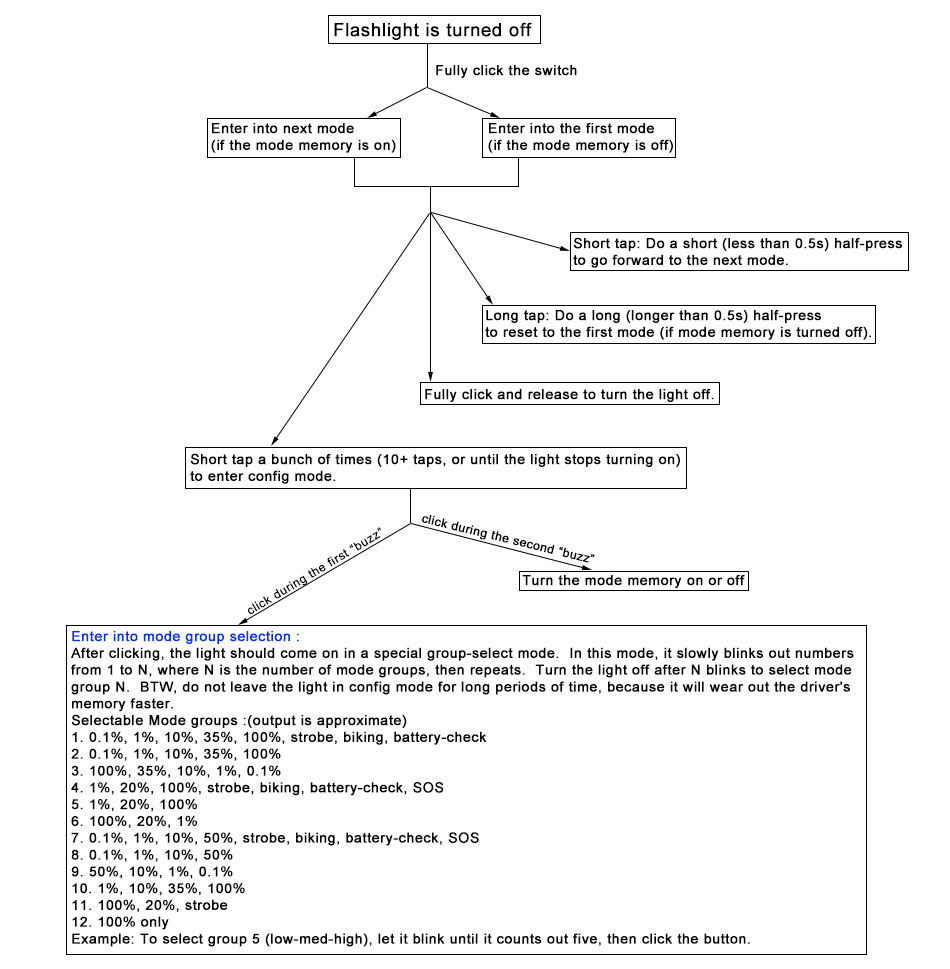
The T3 actually has a little wiggle from that chart – some modes are a little different. So broadly speaking, the guides I have above and below are going to work and get you to your goal group, but the specifics might change a bit. Here’s the mode group list for the Convoy T3 Nichia 519A Flashlight.
From the mode group selection above, the light ships in mode group 1. You’ll want to switch it to mode group 2 quickly of course. 
If something’s wrong (or even just “unclear”) in there, please let me know!
LED and Beam
The Convoy T3 Titanium flashlight has one Nichia 519a emitter. That emitter is all the rage lately, and if you continue reading I think you’ll see why. But the summary is that it has great output with great CCT and great CRI – it’s just a great emitter.
That little green gasket you see under the lens is a glow gasket!
LED Color Report (CRI and CCT)
Without even zooming in or clicking those images below you should be able to get a good idea – look at the circles, to start with. See how nearly the red circle matches the black circle? The black circle is essentially “perfect.” That means that the Nichia 519a is “nearly perfect” – in fact, it’s practically as perfect as we can get in a flashlight. Now translate that into CRI – the CRI is above 96 in every output level. At the lower levels (when not being driven very hard) the CRI is hitting 97!
Beamshots
These beamshots always have the following settings: f8, ISO100, 0.3s shutter, and manual 5000K exposure. These photos are taken at floor level, and the beam hits the ceiling around 9 feet away.
Tint vs BLF-348 (KillzoneFlashlights.com 219b version) (affiliate link)
I keep the test flashlight on the left and the BLF-348 reference flashlight on the right.
I compare everything to the KillzoneFlashlights.com 219b BLF-348 because it’s inexpensive and has the best tint!
Conclusion
What I like
- Very good light to get a Nichia 519A in.
- Great way to get this new Nichia 519A emitter in the CCT of your choice.
- Dual-chemistry support (NiMH and lithium-ion both work)
- It’s titanium!
- Many mode options
- Memory can be turned off
What I don’t like
- No pocket clip included
- Lanyard is not included
- Threads are quite gritty
Notes
This content originally appeared at zeroair.org. Please visit there for the best experience!
- For flashlight-related patches, stickers, and gear, head over to PhotonPhreaks.com!
- Please use my amazon.com referral link to help support zeroair.org!
- Please support me on Patreon! I deeply appreciate your support!




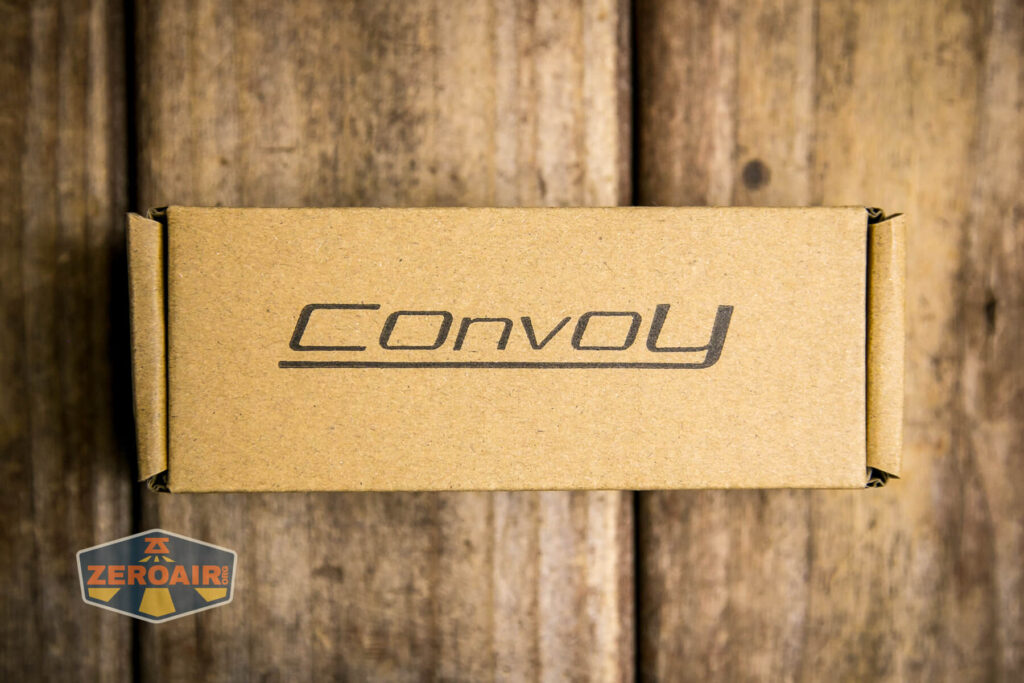

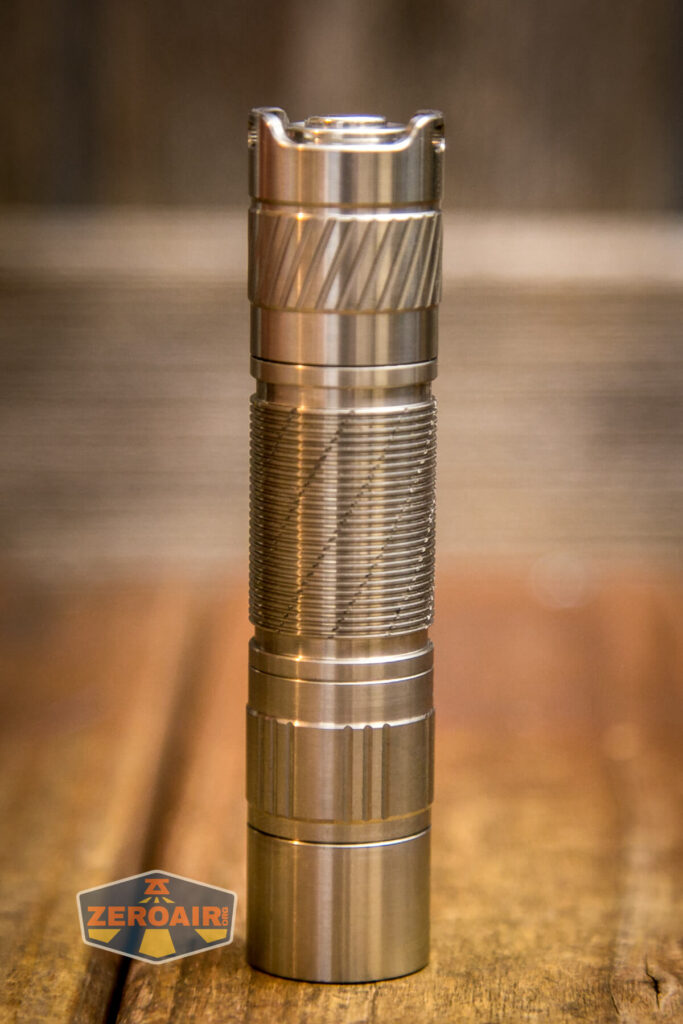

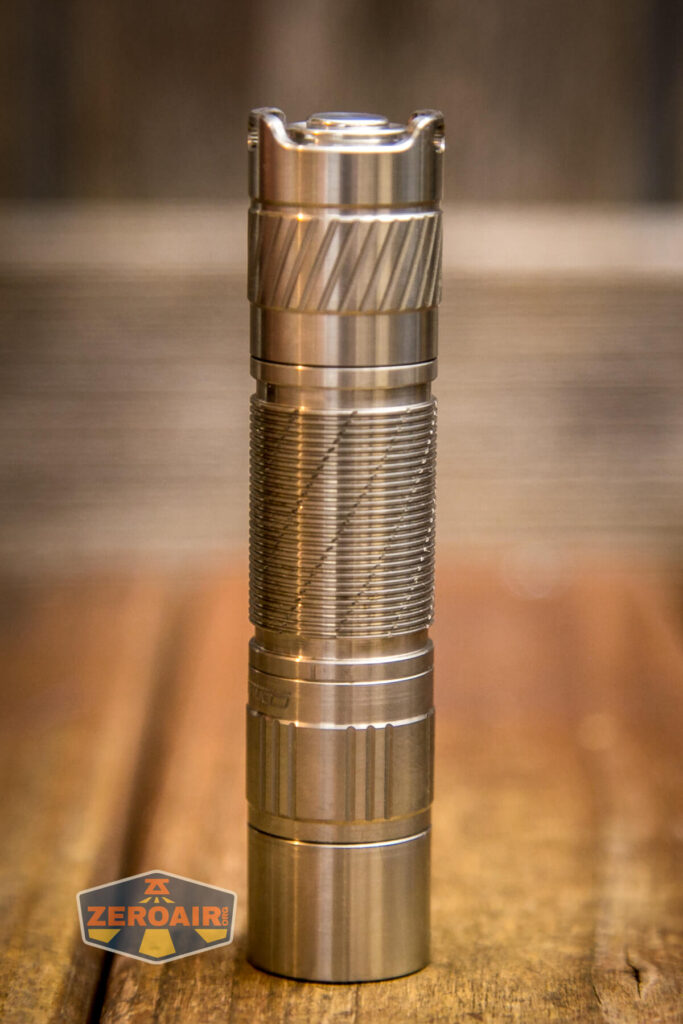
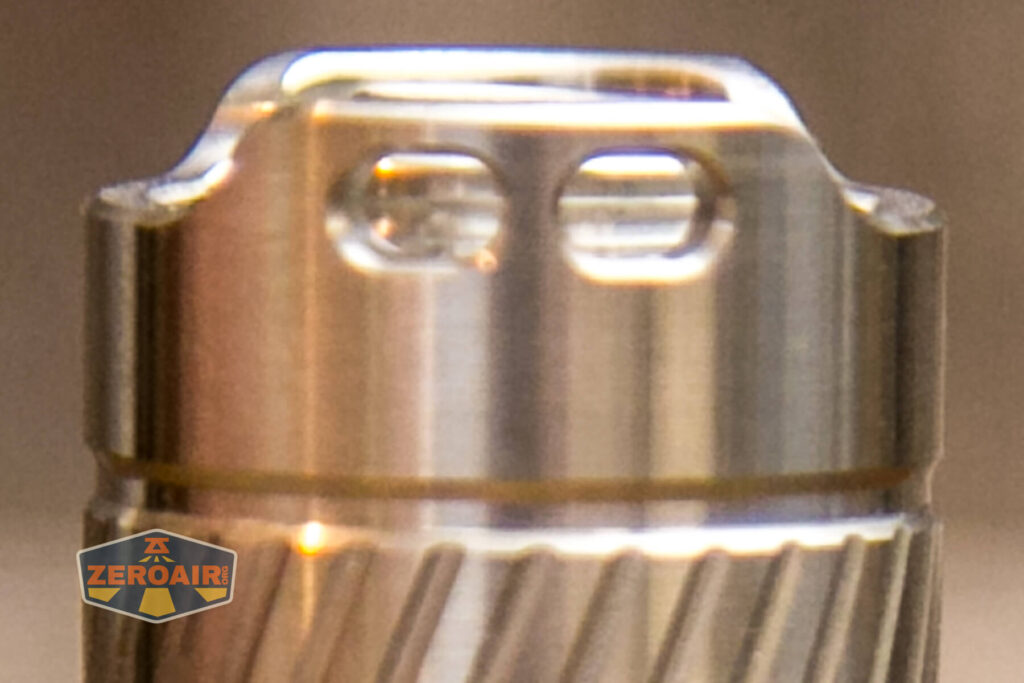
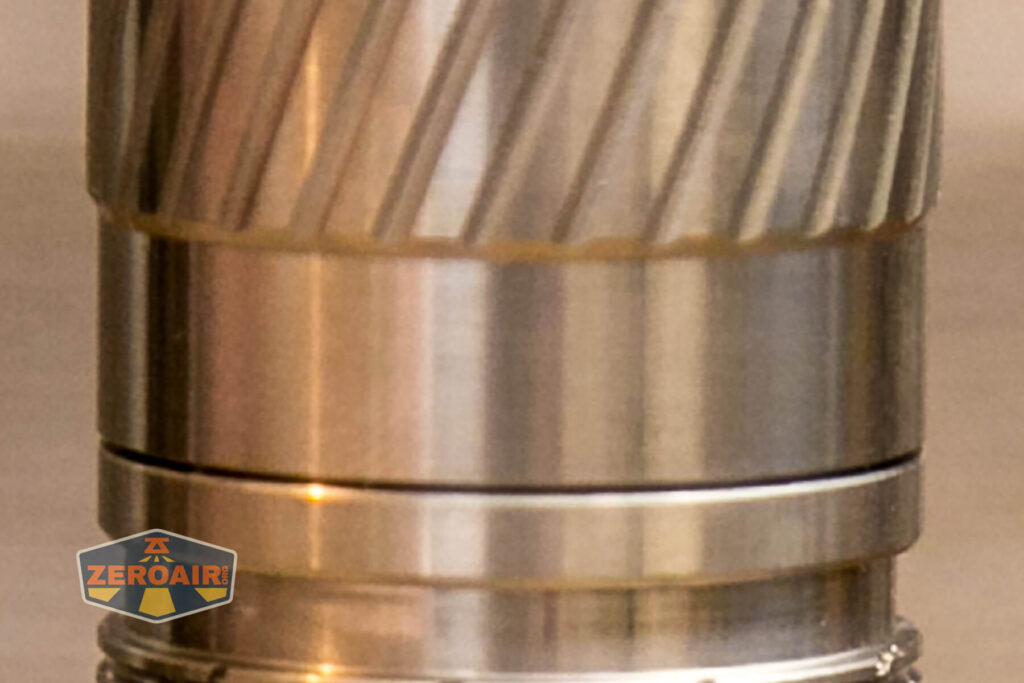

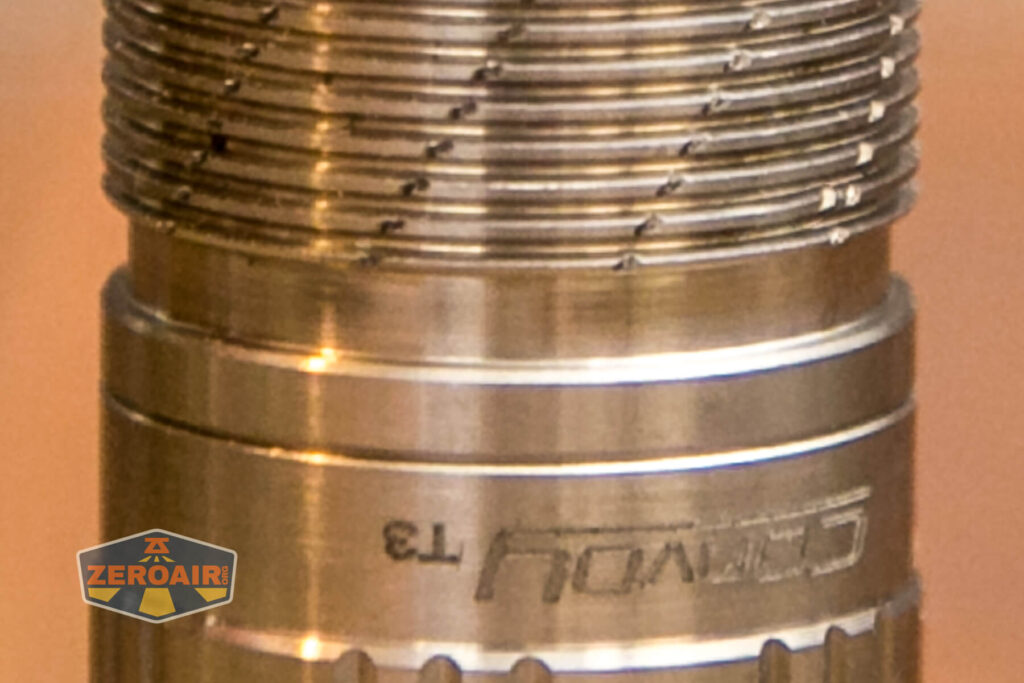
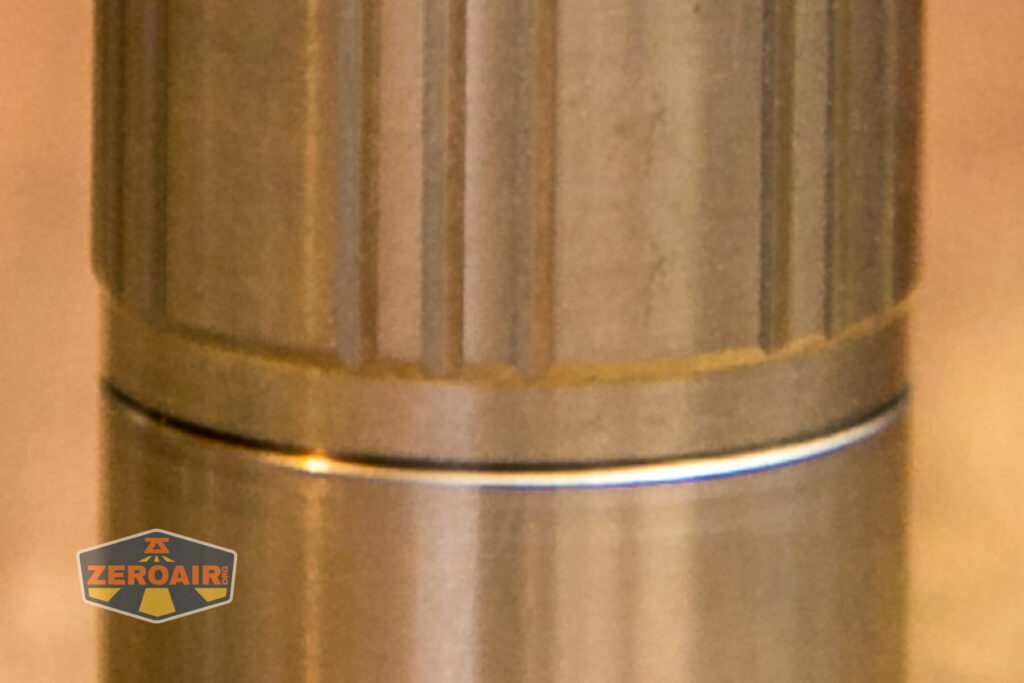
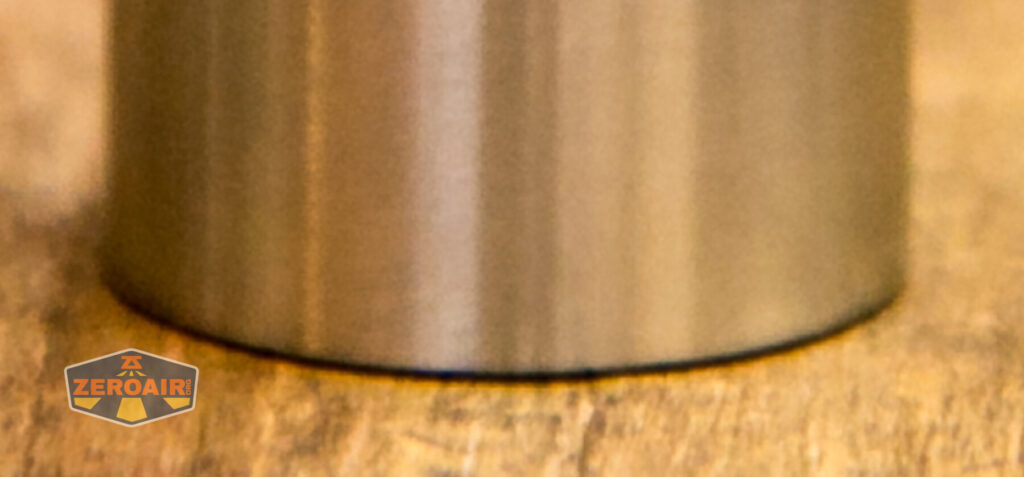

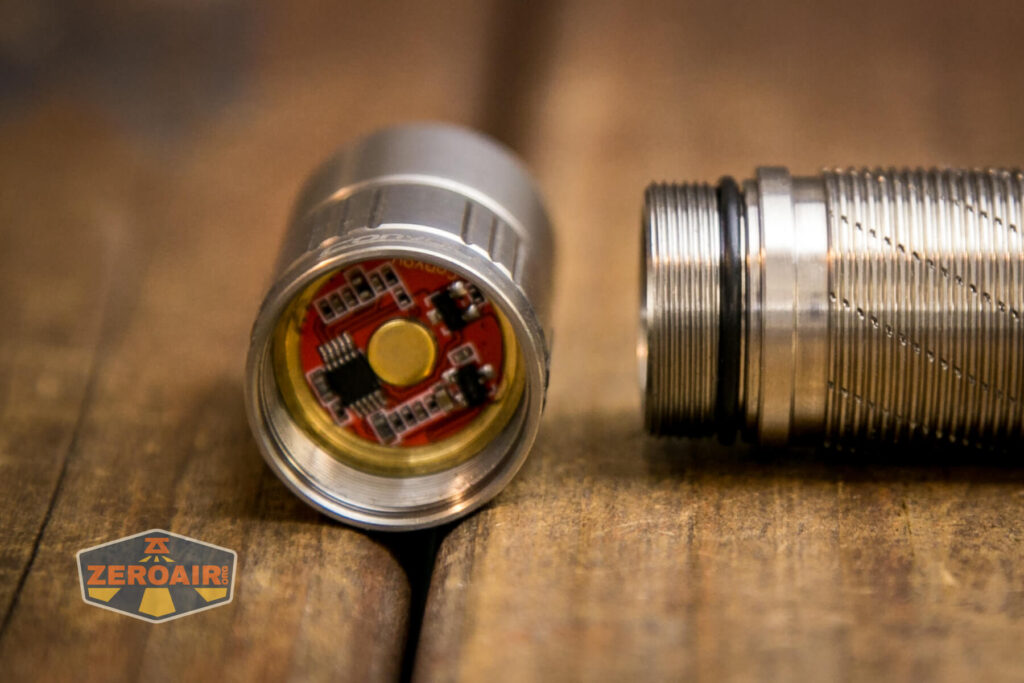
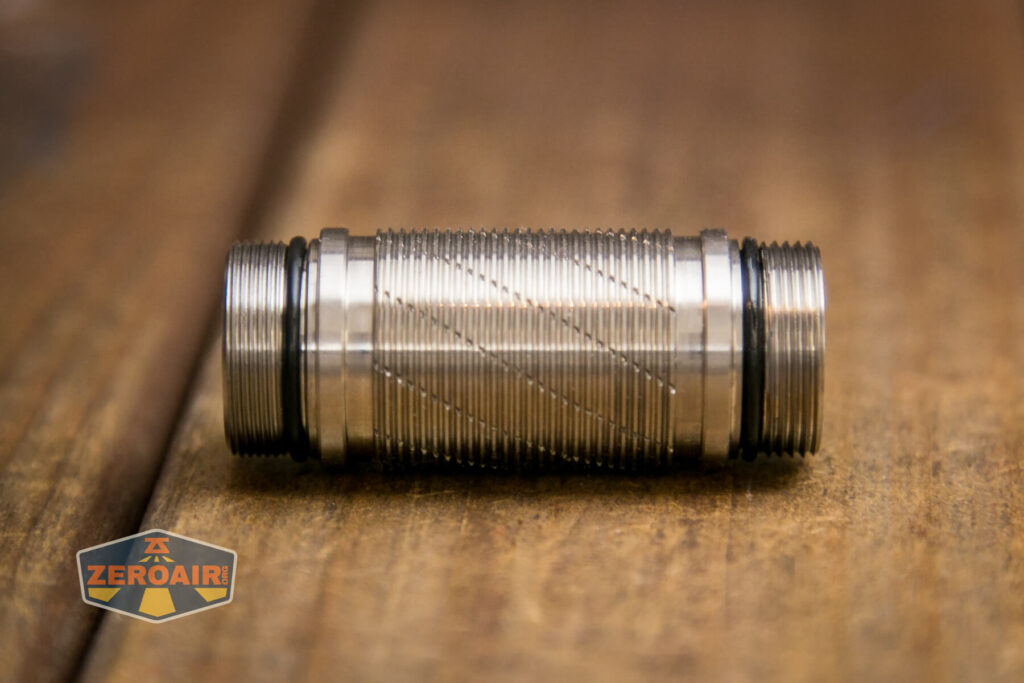










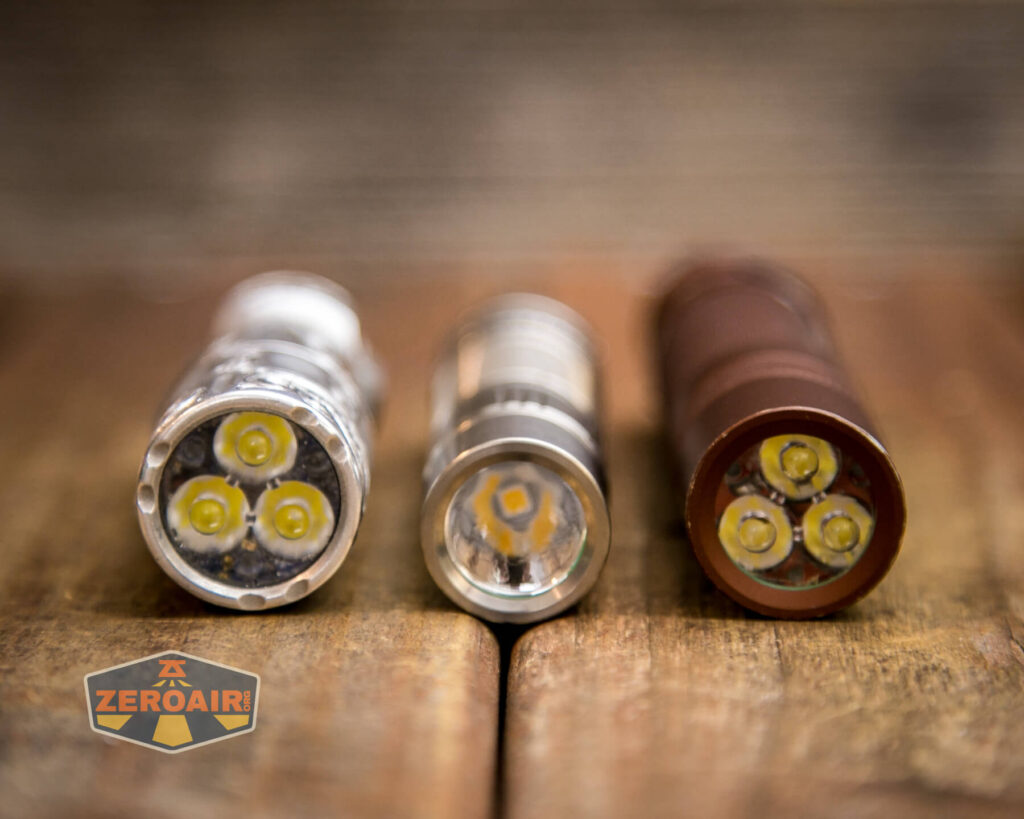




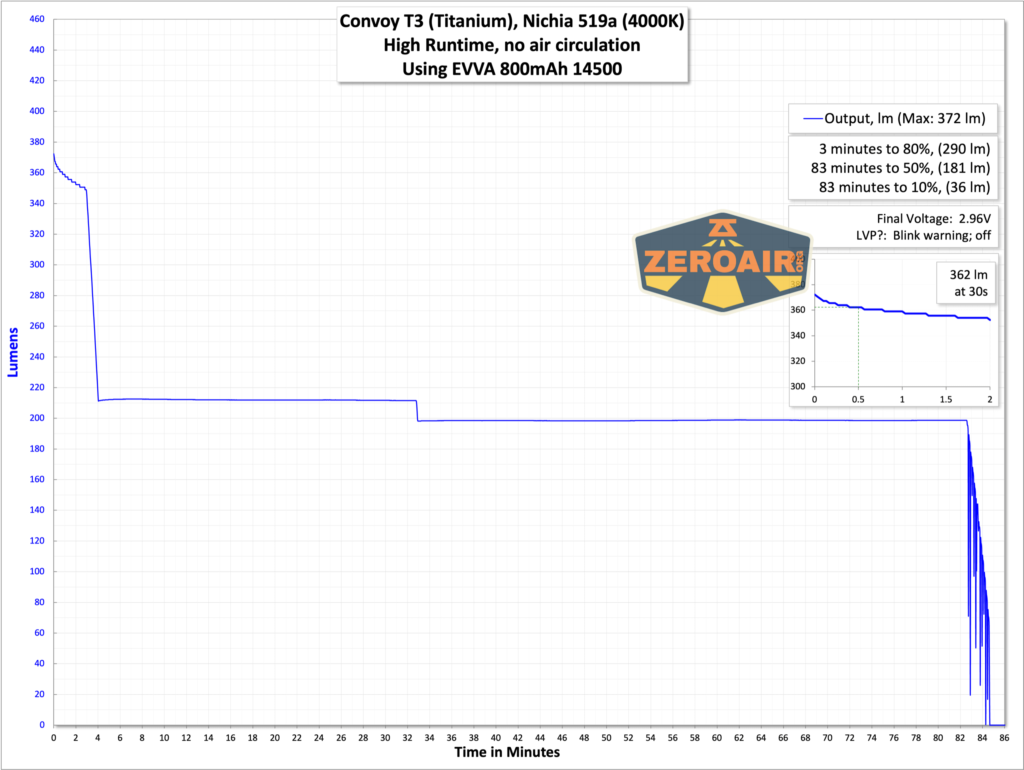
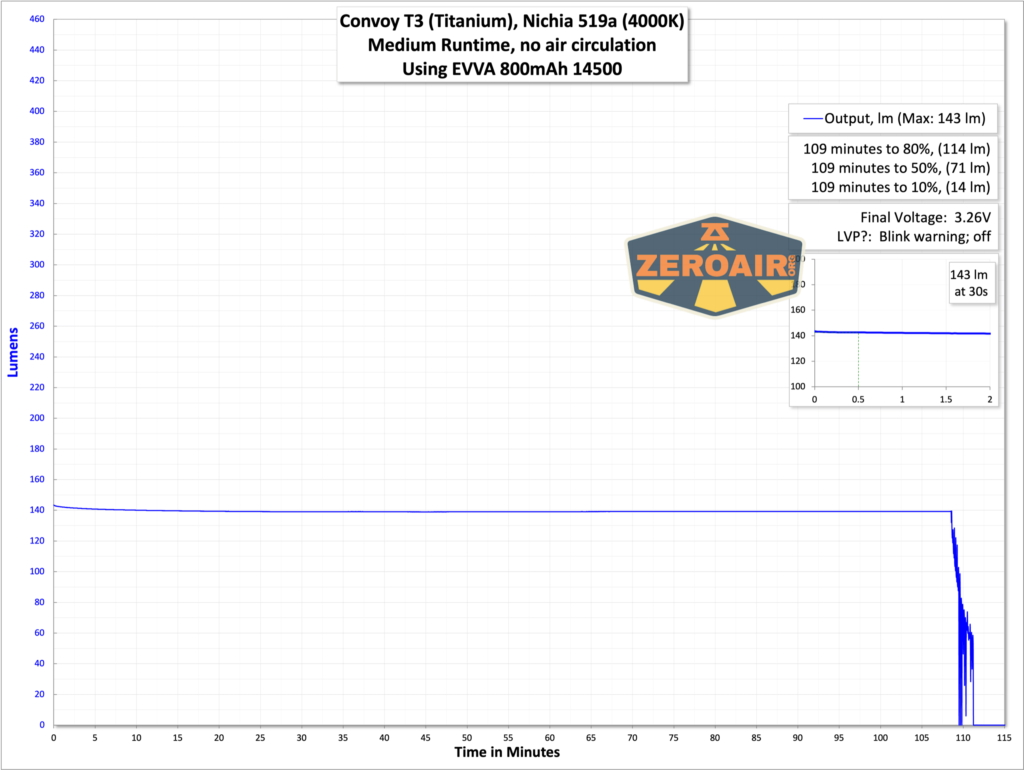
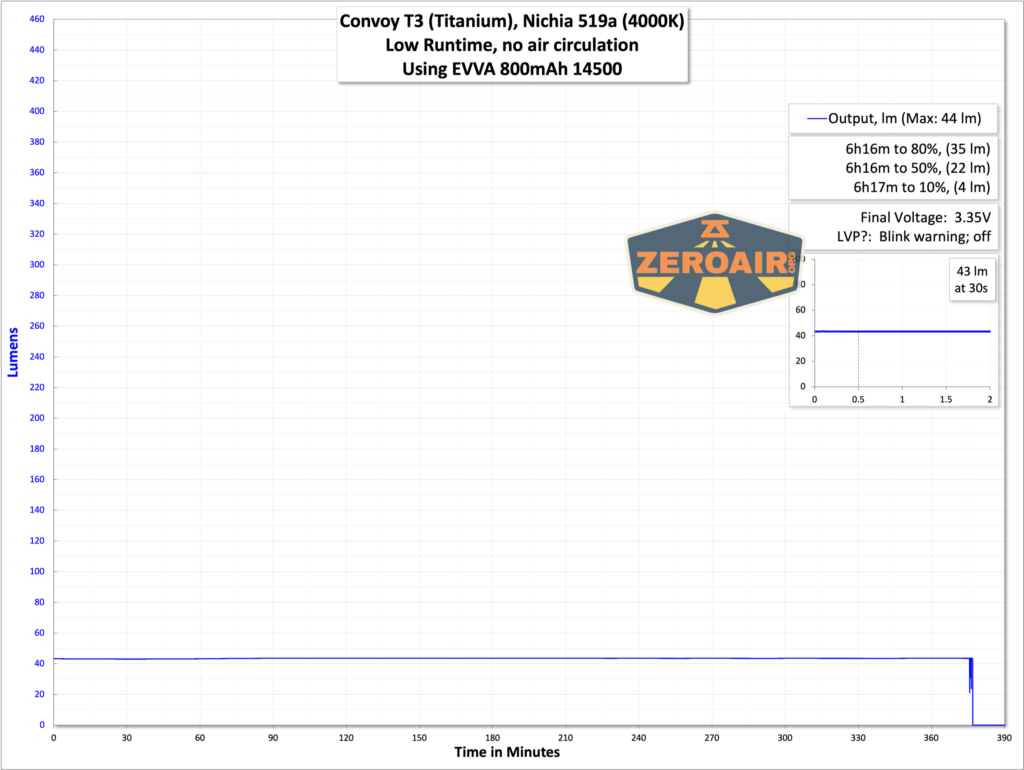
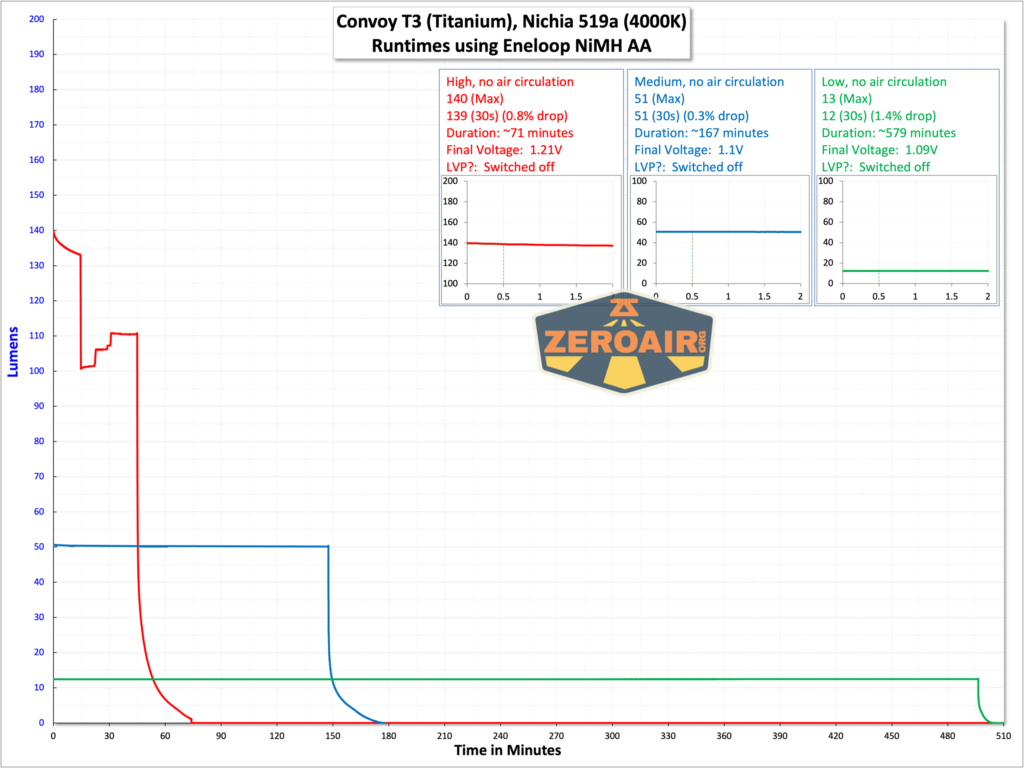

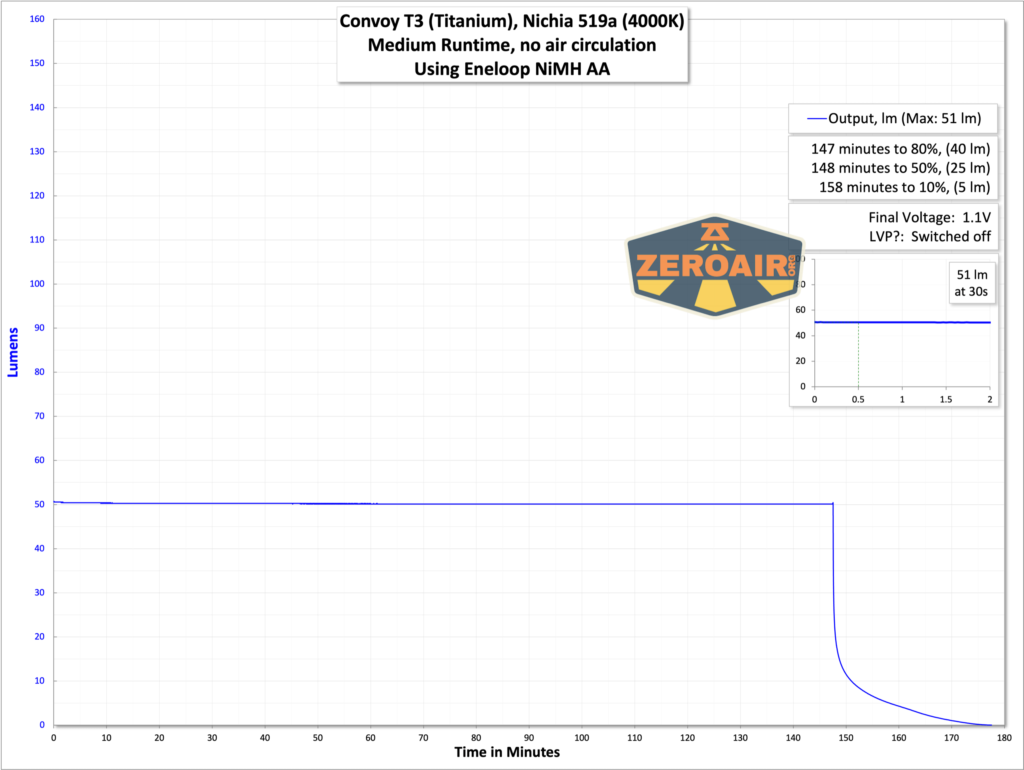

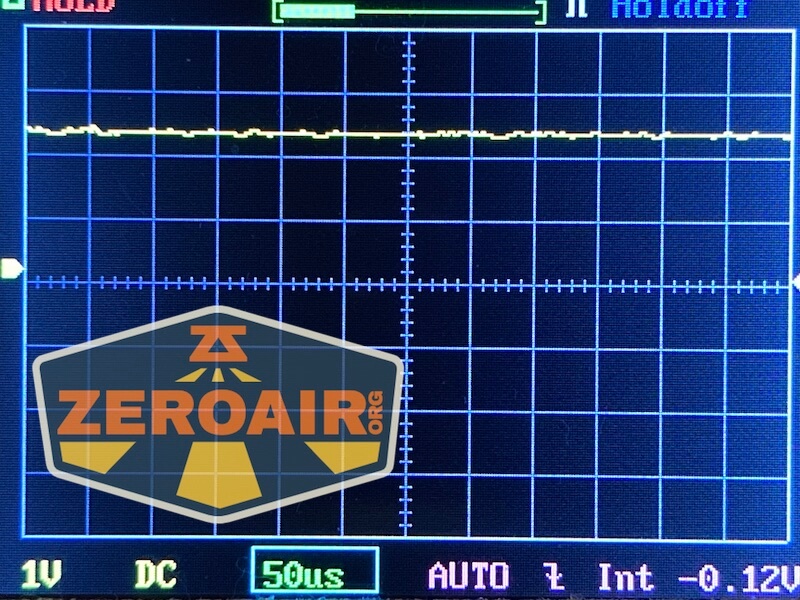
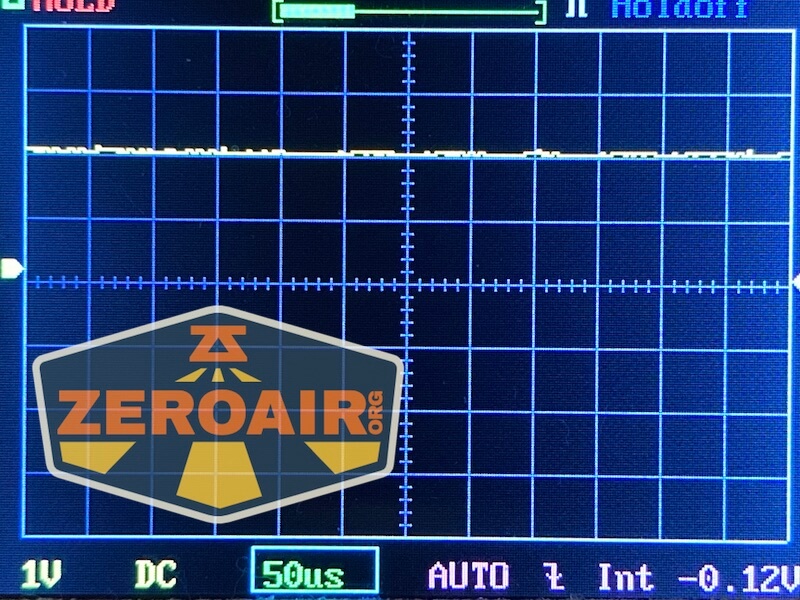
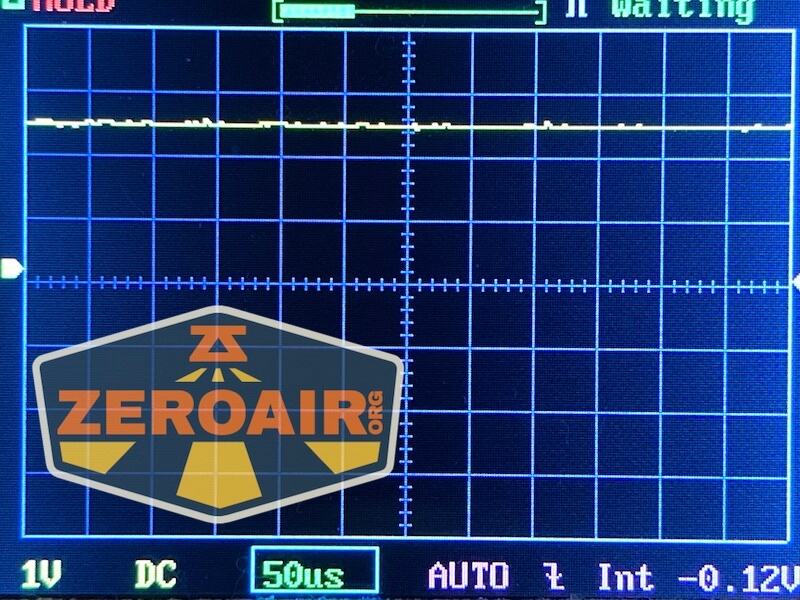
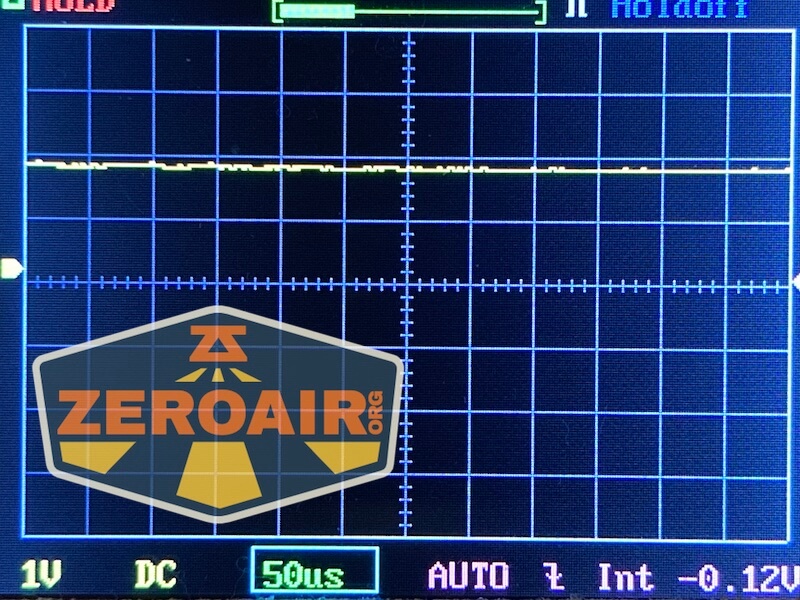
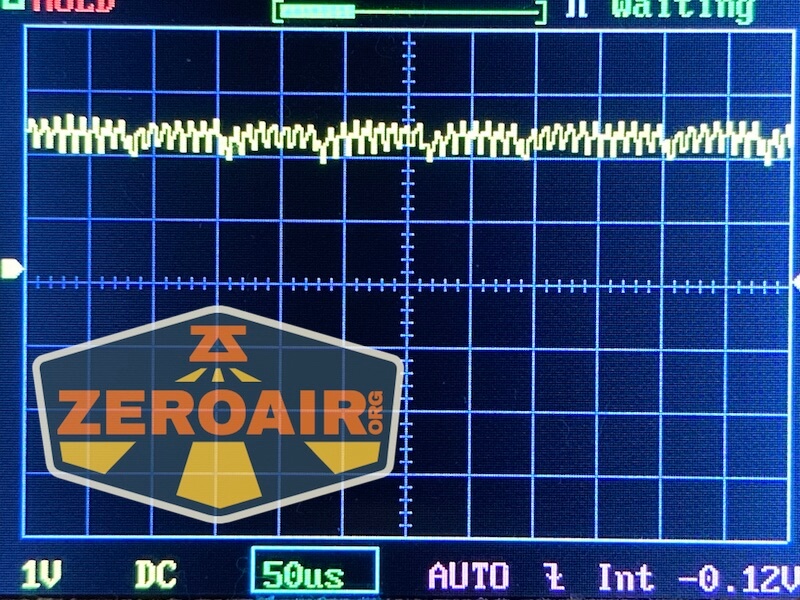


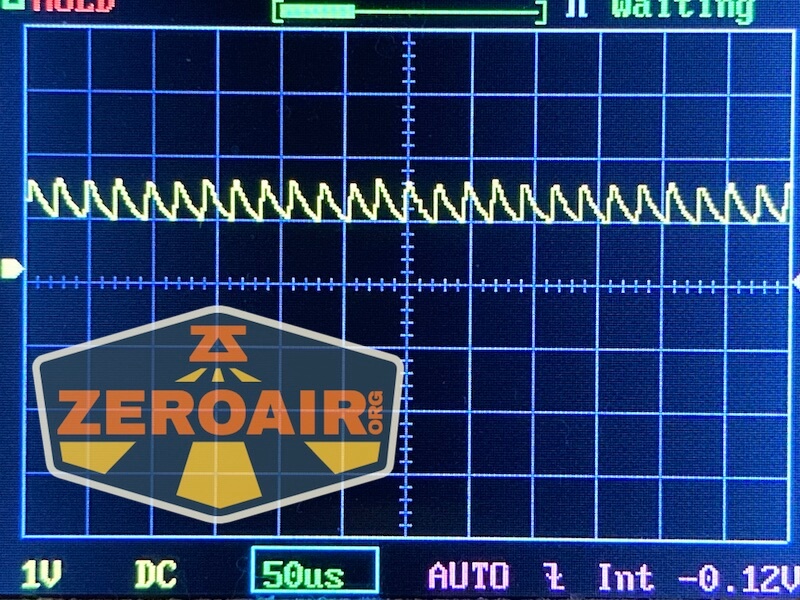
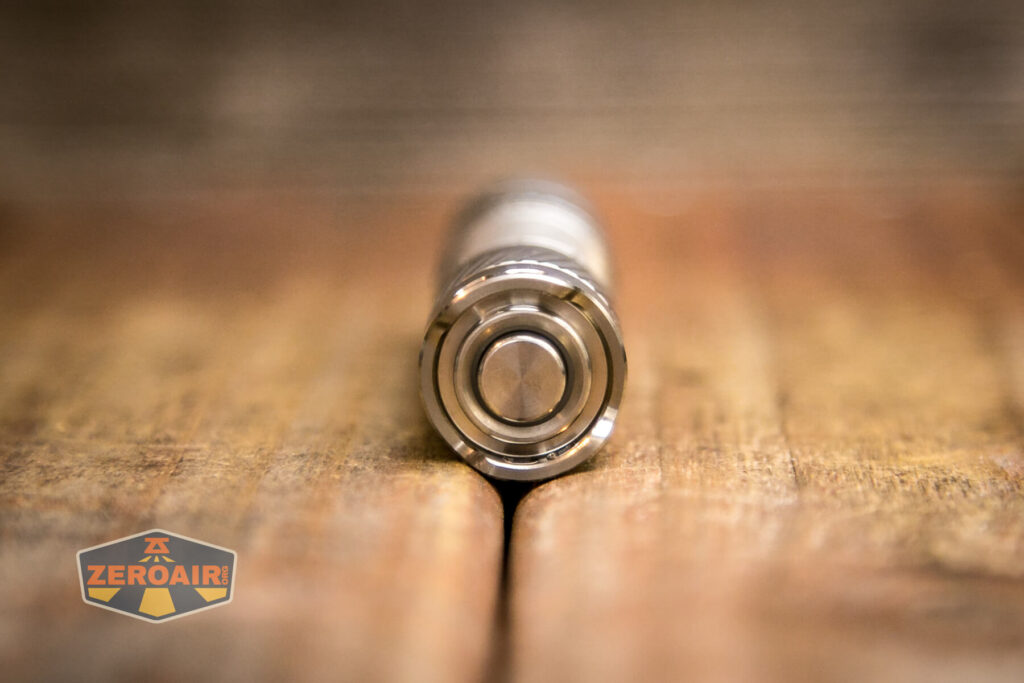






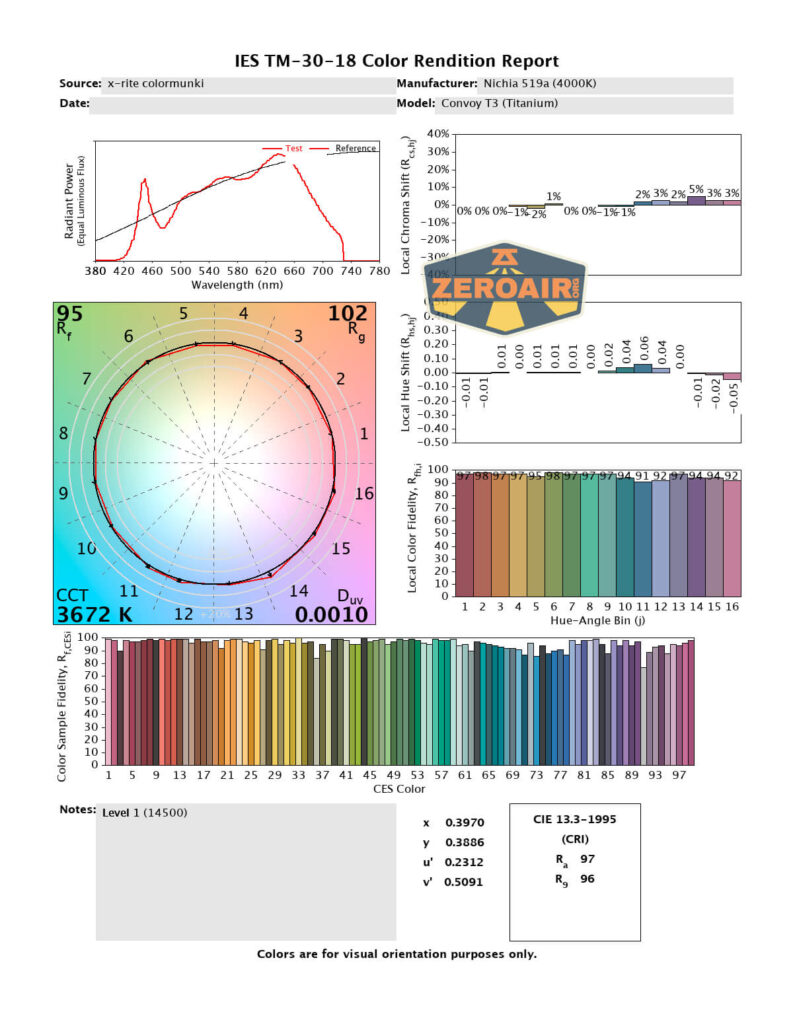
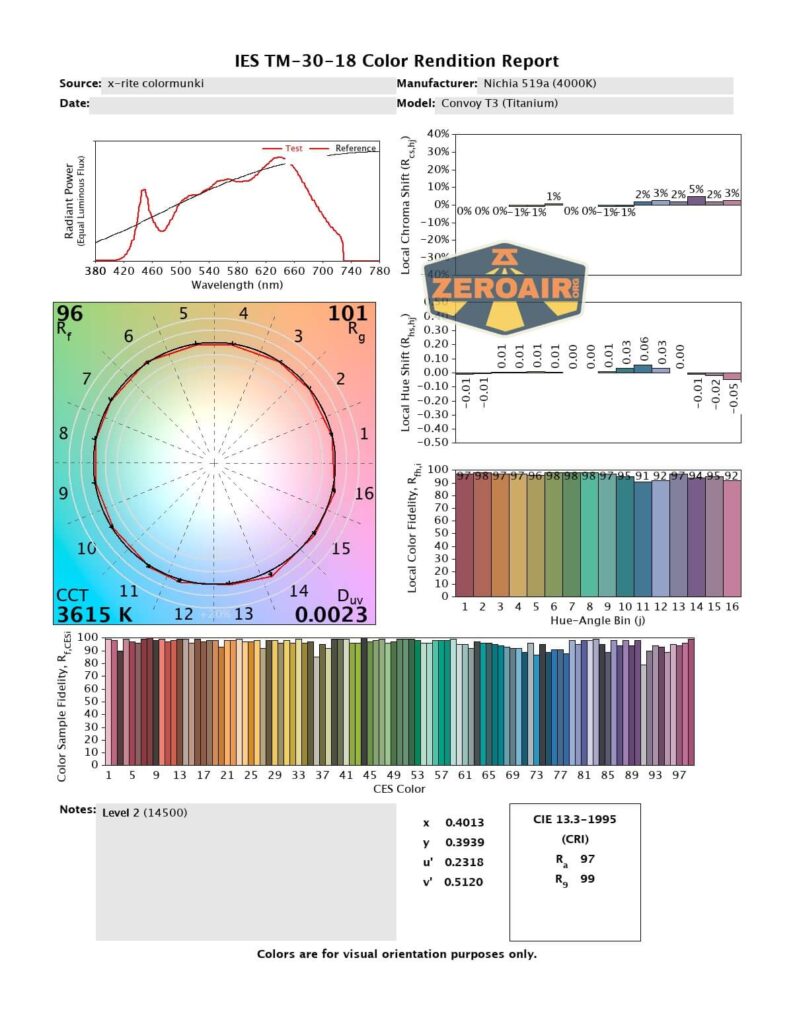
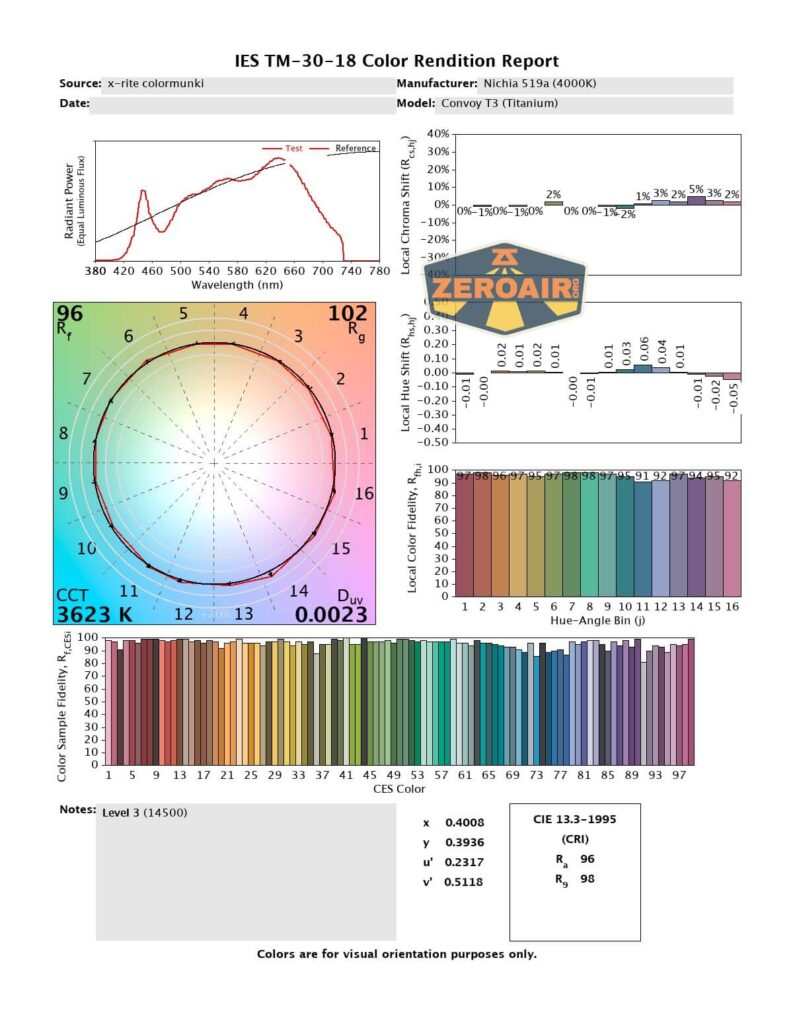








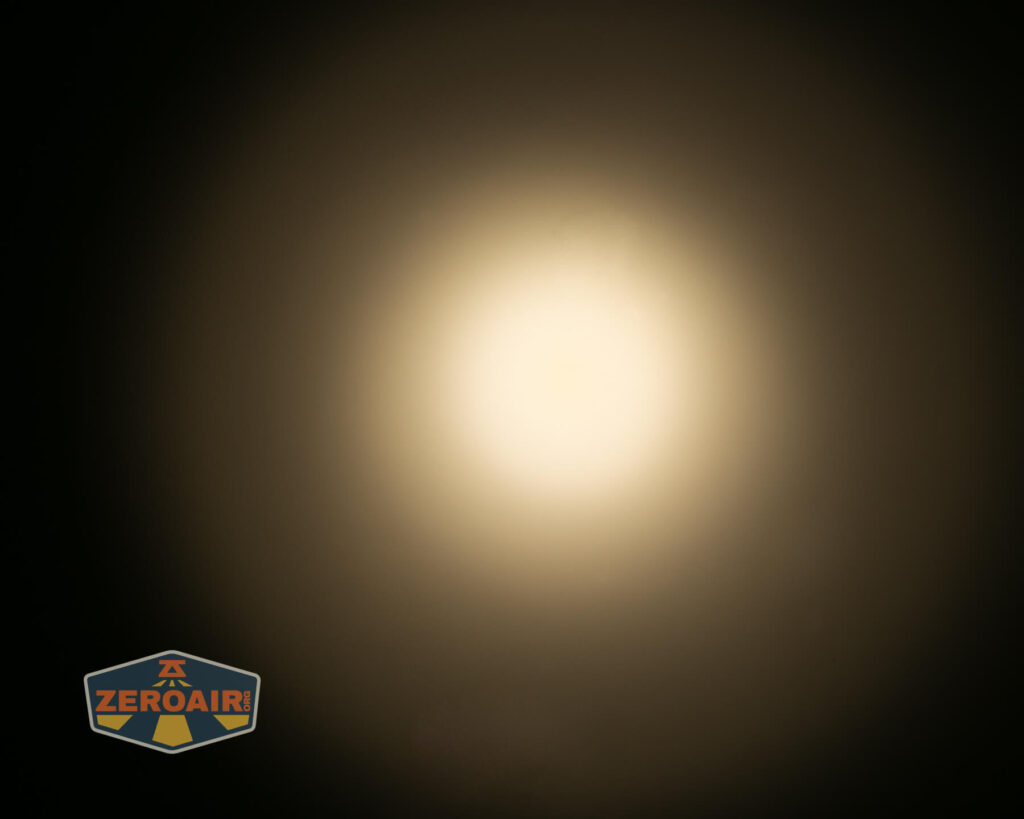



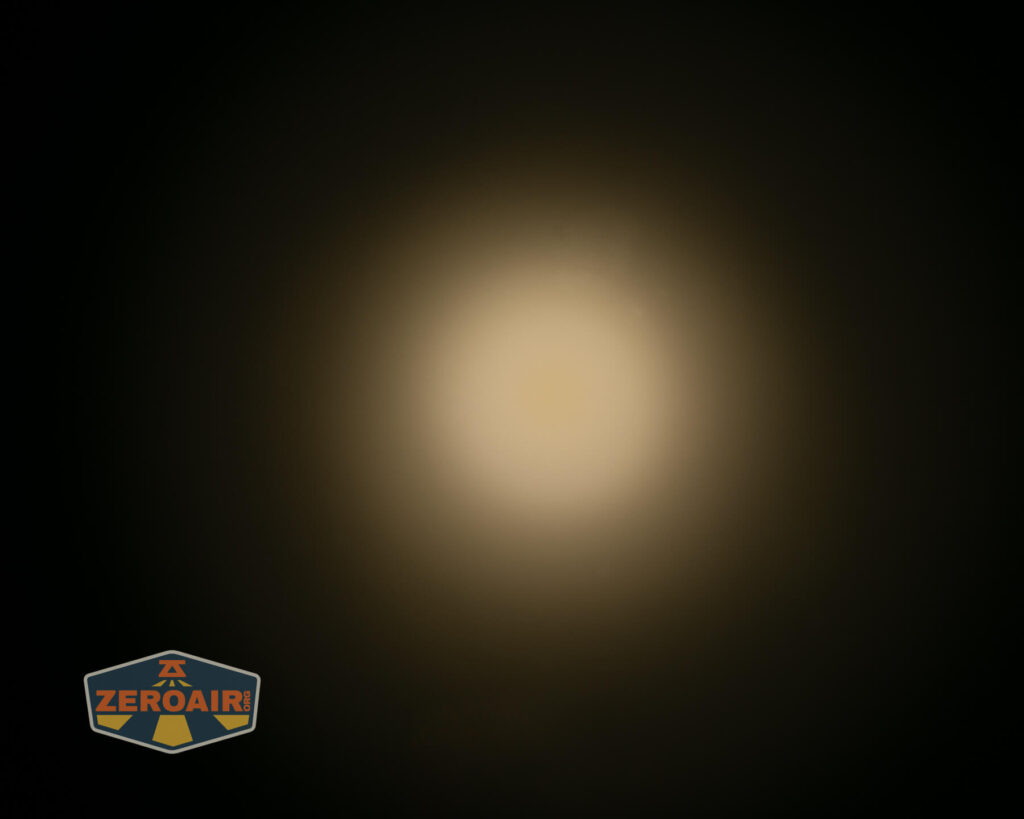
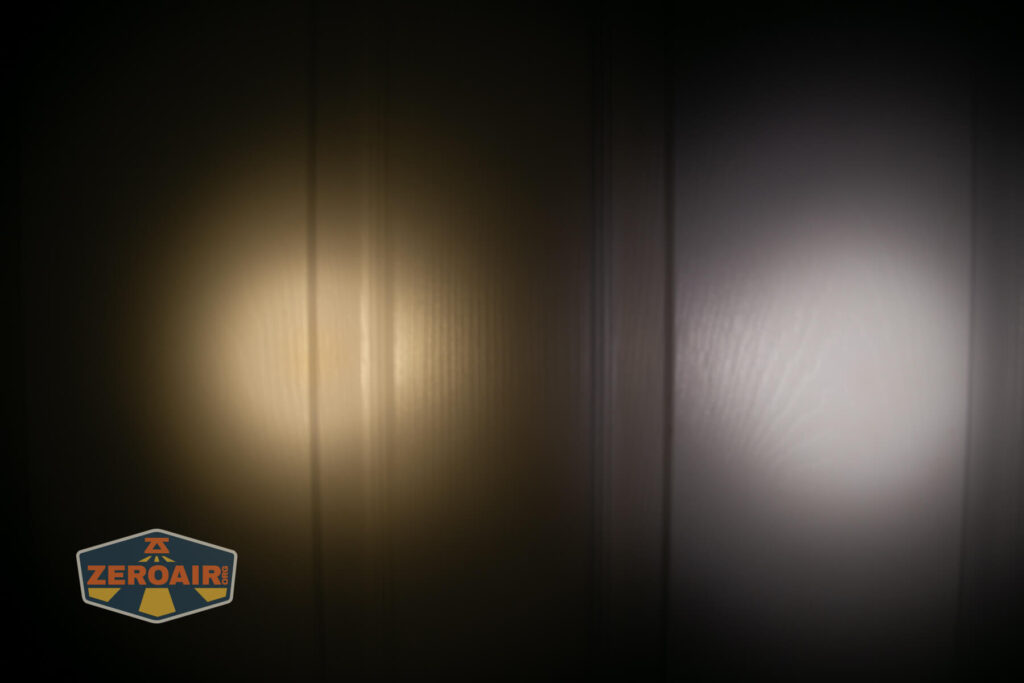
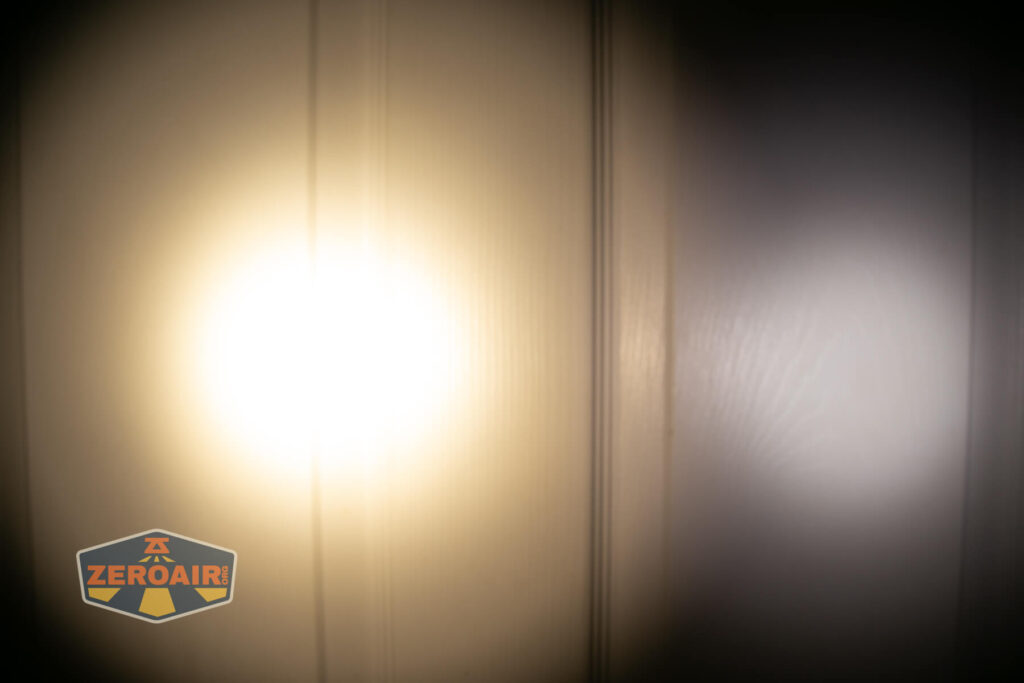





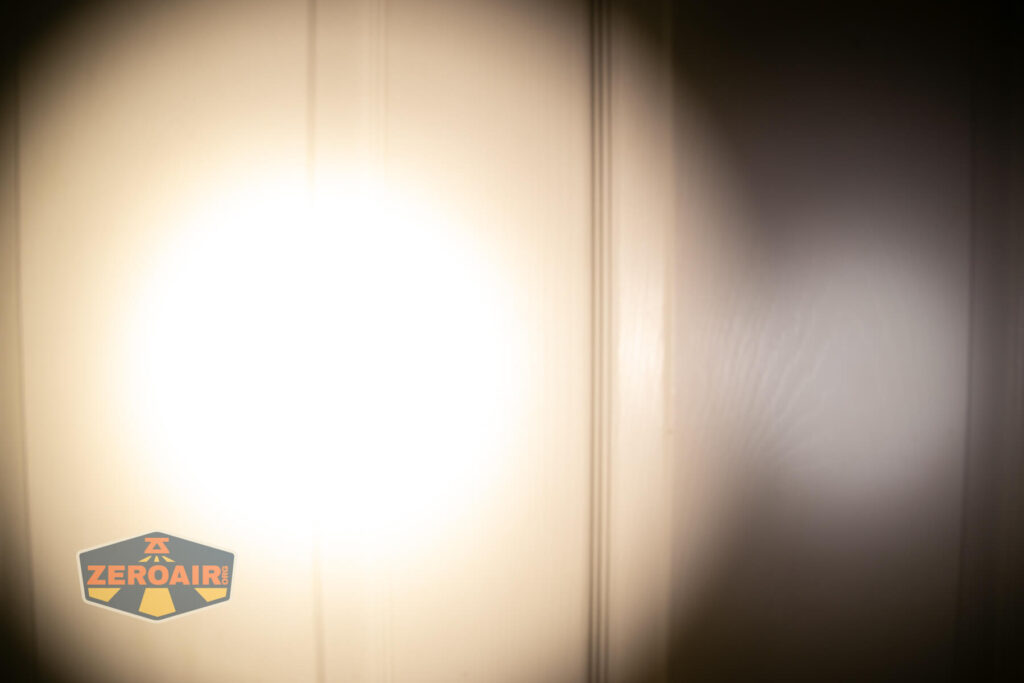
Despite Convoy’s claim of using a 90% efficiency driver for the T3 (as opposed to 70% for T2), your reviews indicate that the T2 is actually about twice as efficient with Ni-MH. The sustained high mode outputs are within 10% of each other, but T2 has more than 2x the runtime. Any ideas on what might be causing this loss of efficiency?